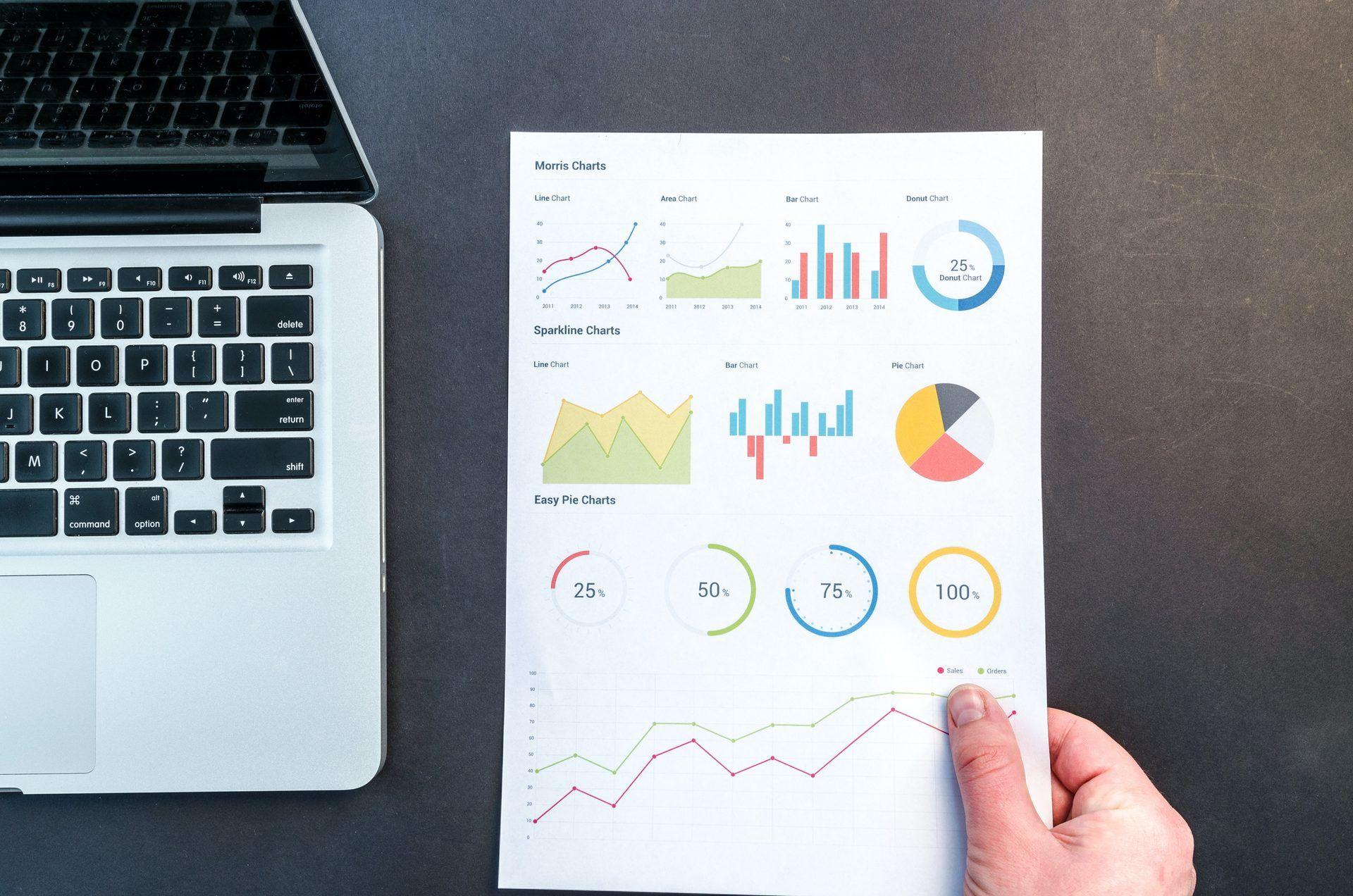Many businesses are not aware of the potential benefits of big data services. Despite the hype, they either aren’t aware they have a big data issue or don’t view it that way. Big data technologies are generally advantageous for an organization when data volume, variety, and velocity suddenly grow and the firm’s current databases and applications can no longer handle the load.
Big data concerns that are not properly addressed can increase expenses and have a negative impact on productivity and competitiveness. On the other hand, a strong big data strategy can assist organizations in lowering costs and improving operational efficiency by converting labor-intensive existing workloads to big data technology and introducing new applications to take advantage of untapped potential.
Big Data-as-a-Service (BDaaS): What are big data services?
Big data as a service provides data platforms and tools by a cloud provider to assist enterprises in handling, managing, and analyzing massive data sets to produce insights that may be used to enhance business operations and achieve a competitive advantage.
Big data as a service (BDaaS) is designed to free up organizational resources by utilizing an outside provider’s data management systems and IT expertise rather than deploying on-premises systems and employing in-house staff for those functions.
Many companies generate enormous amounts of structured, unstructured, and semistructured data. Big data as a service can be offered as a contract for a managed service hosted and administered by a cloud provider or as dedicated hardware and software running in the cloud.

Remembering what big data is can help us better understand the subject.
What is big data?
Big data refers to data management issues that, as a result of the growing amount, velocity, and variety of data, cannot be resolved by conventional databases.
There are several ways to define big data, but most of them contain the idea of the so-called “three V’s” of big data:
Volume: Data volume varies between terabytes and petabytes.
Variety: Variety includes information from many different sources and formats (e.g. web logs, social media interactions, ecommerce and online transactions, financial transactions, etc)
Velocity: Businesses are becoming more demanding from when data is collected to when users receive actionable insights. As a result, data must be gathered, saved, processed, and evaluated within relatively brief time frames, ranging from daily to real-time.
Evolution of big data processing
Big data ecosystem development is progressing quickly. Today, a variety of analytical approaches serve various organizational activities.
Users can respond to the question “What happened and why?” with the aid of descriptive analytics. Traditional query and reporting setups with scorecards and dashboards are some examples.
Users can evaluate the likelihood of a specific event in the feature with the aid of predictive analytics. Examples are early warning systems, fraud detection, preventive maintenance, and forecasting.
Prescriptive analytics offer the user particular (prescriptive) suggestions. They respond to the query: What should I do if “x” occurs?
Big data as a service examples
One of the most significant developments of the digital era is the technology known as “Big Data.” Powerful analytics reveal patterns and connections hidden in enormous data sets, informing planning and decision-making in almost every business, as we see in big data benefits for SMEs.
Are you wonder about data curation definition and benefits?
Big Data usage has increased so much in the past ten years that it affects almost every element of our lifestyles, purchasing patterns, and everyday consumer decisions.
Here are a few instances of Big Data applications that impact humans daily:
Transportation
The GPS smartphone applications that most of us rely on to go from place to place in the shortest amount of time are powered by big data. Government organizations and satellite photos are two suppliers of GPS data.
For transatlantic trips, an airplane can produce 1,000 terabytes or more worth of data. All of this data is ingested by aviation analytics systems, which then analyze fuel efficiency, passenger and cargo weights, and weather patterns to maximize safety and energy use.

Big Data makes transportation easier and more efficient by:
Congestion management and traffic control: Google Maps can now provide the least congested route to any location, thanks to big data analytics.
Route planning: To plan for maximum efficiency, different routes can be compared in terms of user needs, fuel consumption, and other elements.
Traffic safety: To identify accident-prone locations, real-time processing and predictive analytics are employed.
Advertising and marketing
Advertising has always been focused on particular customer groups. In the past, marketers have used focus groups, survey results, TV and radio preferences, and other methods to attempt and predict how consumers will react to advertisements. These techniques were, at best, informed guesses.
To find out what people actually click on, search for, and “like,” advertisers purchase or collect enormous amounts of data nowadays. Utilizing precise measures like views and click-through rates, marketing initiatives are also evaluated for efficacy.
As an illustration, Amazon gathers enormous amounts of information about its millions of customers’ purchases, shipping methods, and payment preferences. The business then offers highly targeted ad placements to narrow segments and subgroups.
We have already gathered the best real-life database marketing examples for you.
Banking and financial services
Big Data and analytics are used to great effect in the financial sector for:
Fraud detection: Banks track customers’ spending habits and other activities to spot unusual behavior and anomalies that could indicate fraudulent transactions.
Risk management: Banks can track and report on operational procedures, KPIs, and personnel activities thanks to big data analytics.
Customer relationship optimization: In order to better understand how to turn prospects into customers and encourage higher use of different financial products, financial institutions study data from website usage and transactional data.
Personalized marketing: Banks build detailed profiles of each customer’s lifestyle, tastes, and goals using big data, which are then applied to micro-targeted marketing campaigns.
Government
Government organizations gather enormous amounts of data, but many of them, particularly at the local level, don’t use cutting-edge data mining and analytics tools to get the most out of it.
The Social Security Administration and the IRS are examples of organizations that utilize data analysis to spot false disability claims and tax evasion. The FBI and SEC monitor markets using big data techniques to find illegal business practices. The Federal Housing Authority has been predicting mortgage default and repayment rates using big data analytics for years.
Media and entertainment
The entertainment sector uses Big Data to analyze consumer feedback, forecast audience interests and preferences, manage programming schedules, and target advertising efforts.
The two most notable examples are Spotify and Amazon Prime, which both use big data analytics to provide subscribers with customized programming recommendations.
Meteorology
Globally distributed weather sensors and satellites gather much data to monitor the environment.

Big Data is used by meteorologists to:
- Analyze the trends in disasters.
- Make weather predictions.
- Recognize the effects of global warming.
- Determine the locations of the world where drinking water will be available.
- Provide early notice of imminent emergencies like storms and tsunamis.
Healthcare
Big Data is steadily but significantly changing the enormous healthcare sector. Patients’ electronic health records are updated in real-time using wearable technology and sensors data.

Do you know using data brings down healthcare costs?
Big Data is currently being used by providers and practice organizations for a variety of purposes, such as the following:
- Predicting the onset of epidemics
- Early symptom recognition to avert diseases that can be prevented
- Digital health records
- Real-time notification
- Increasing patient involvement
- Prediction and averting the development of major medical disorders
- Plan strategically
- Research speed up
- Telemedicine
- Improved medical image analysis
Cybersecurity
Big Data may increase the danger of cyberattacks for enterprises, but machine learning and analytics can use the same datastores to deter and combat online crime. Analysis of historical data can produce intelligence to build more effective threat controls.
Additionally, machine learning can alert companies when patterns and sequences deviate from the norm, so effective countermeasures may be performed against risks like ransomware assaults, harmful insider programs, and attempts at unauthorized access.
After an intrusion or data theft has occurred at a corporation, post-attack analysis can reveal the techniques utilized. Machine learning can then be used to create defenses that will thwart such attempts in the future.
We have already gathered cybersecurity best practices in 2022.
Education
Big Data is being embraced by administrators, academics, and other stakeholders to assist them enhance their courses, entice top talent, and enhance the student experience.

Examples comprise:
Customizing curricula: Big Data makes it possible to customize academic programs to the needs of specific students, frequently combining online learning with conventional on-site classes and independent study.
Reducing dropout rates: Predictive analytics provides educational institutions with information on student performance, feedback on suggested courses of study, and advice on how graduates perform in the labor market.
Improving student outcomes: It is possible to better understand students’ learning preferences and habits by examining their individual “data trails,” which may then be applied to design an environment that fosters learning.
Targeted international recruiting: Institutions can more correctly anticipate applicants’ chances of success thanks to big data analysis. On the other hand, it helps overseas students identify the universities most likely to accept them and best meet their academic objectives.
5 best big data services company
In the modern world, gathering data allows you to identify the causes of failure, update risk profiles, and other issues. Faster decision-making and cost reduction are further benefits.

Cloud-based analytics and Hadoop technologies enable businesses to examine information or data, instantly accelerating decision-making. But which companies are the best?
IBM
American corporation International Business Machine (IBM) has its main office in New York. As of May 2017, IBM was ranked number 43 on the Forbes list with a market capitalization of $162.4 billion. With about 414,400 people, the firm is the largest employer and operates in 170 countries.
IBM made a profit of $11.9 billion on sales of about $79.9 billion. For 24 years running, IBM has the most patents produced by the industry as of 2017.
The largest supplier of goods and services for big data is IBM. IBM Big Data solutions offer functions like data management, data analysis, and data storage.
Oracle
Oracle provides fully integrated cloud applications and platform services with more than 420,000 clients and 136,000 employees working in 145 countries. According to Forbes’ ranking, it has a market valuation of $182.2 billion and annual sales of $37.4 B.
The largest player in the big data space is Oracle, which is also well-known for its leading database. Oracle makes use of big data’s advantages in the cloud. It aids firms in defining their big data and cloud technologies data strategy and approach.
It offers a business solution that uses big data applications, infrastructure, and analytics to offer insight into logistics, fraud, etc. Oracle also offers industry-specific solutions that guarantee your business can benefit from big data potential.
Amazon
In 1994, Amazon.com was established, with its headquarters in Washington.
Amazon’s cloud-based platform is well known. Elastic MapReduce, which is built on Hadoop, is its flagship product. It also provides Big Data products. Redshift, NoSQL, and DynamoDB Big Data databases are examples of data warehouses that utilize Amazon Web Services.
Microsoft
Microsoft is a US-based software and programming company with Washington as its corporate headquarters. According to Forbes, it has $85.27 billion in sales and a market capitalization of $507.5 billion. Around 114,000 people are currently employed by it worldwide.

Microsoft has a broad and expanding big data strategy. A collaboration with the Big Data firm Hortonworks is part of this plan. Through this cooperation, Hortonworks’ data platform will have access to the HDInsight tool for analyzing both structured and unstructured data (HDP)
Google was founded in 1998, and California is headquartered. It has a $101.8 billion market capitalization and $80.5 billion of sales as of May 2017. Around 61,000 employees are currently working with Google across the globe.
Google provides integrated, end-to-end Big Data solutions based on innovation at Google and helps different organizations capture, process, analyze and transfer data in a single platform. Google is expanding its Big Data Analytics; BigQuery is a cloud-based analytics platform that analyzes a huge set of data quickly.
Best big data solutions
There are very successful big data solutions according to various needs.

Here are some of them:
Big data services in AWS
The most significant big data implementation support provided by AWS is in the form of analytics tools. You can utilize the provider’s wide range of services to automate data analysis, manipulate datasets, and gain insights.
Amazon Kinesis
With the help of the Kinesis service, you may gather and examine real-time data streams. Website clickstreams, application logs, and Internet of Things (IoT) telemetry data are a few examples of supported streams. Kinesis supports data export to Redshift, Lambda, Elastic MapReduce (Amazon EMR), and S3 storage, among other AWS services. Using the Kinesis Client Library, you may leverage Kinesis to create unique streaming data applications (KCL). Real-time dashboards, alert production, and dynamic content are all supported by this library.
Amazon EMR
You can analyze and store data using the EMR distributed computing framework. It is built using clustered EC2 instances and Apache Hadoop. A well-known platform for processing and analyzing massive data is Hadoop.
By managing and maintaining your Hadoop infrastructure when you deploy EMR, you are free to concentrate on analytics. The most popular Hadoop tools, such as Spark, Pig, and Hive, are supported by EMR.
Amazon Glue
You can process data and carry out extract, transform, and load (ETL) activities using the service Glue. It can be used to transport data between your data storage as well as clean, enrich, and catalog data. Being a serverless service, Glue frees you from the hassle of establishing infrastructure and only charges you for the resources you use.
Amazon Machine Learning (Amazon ML)
Without ML knowledge, Amazon ML is a service that supports creating machine learning models. It has wizards, visualization tools, and pre-built models to get you started.

The service can help you evaluate training data, optimize your trained model to suit business requirements, and more. Once finished, you can access your model’s output through batch exports or an API.
Amazon Redshift
You can use Redshift, a fully-managed data warehouse service for business intelligence analyses. It is designed for big SQL queries on structured and semi-structured data. SageMaker, Athena, and EMR are just a few analytics services that can access the S3 data lake storage where query results are stored after processing.
You can query data on S3 using Redshift’s Spectrum capability, which allows you to avoid using ETL procedures. This function analyses your data storage and query requirements, then optimizes the procedure to reduce the quantity of S3 data that needs to be read. This cuts down on expenses and expedites query processing.
Amazon QuickSight
You can create visualizations and analyze ad hoc data with the business analytics application QuickSight. It supports ingesting data from a wide range of sources, including on-premises databases, exported Excel or CSV files, and AWS services like S3, RDS, and Redshift.
A “super-fast, parallel, in-memory calculating engine” is used by QuickSight (SPICE). This engine employs machine code generation to create interactive searches based on columnar storage. To ensure that the following inquiries are as quick as possible, the engine maintains the data after a query has been executed until the user manually erases it.
Big data services in Oracle
The expanding need for many industries, including banking, healthcare, communications, public sector, retail, etc., is met by Oracle’s big data industry solutions. There are many different technological options, including system integration, cloud computing, and application development.
Oracle Big Data Preparation Cloud Services
With the help of the managed Platform as a Service (PaaS) cloud-based Oracle Big Data Preparation Cloud Service, you can quickly ingest, correct, enrich, and publish huge data sets in a collaborative setting. For downstream analysis, you can combine your data with other Oracle Cloud Services, such as Oracle Business Intelligence Cloud Service.
Oracle Big Data Appliance
Running a variety of workloads on Hadoop and NoSQL systems requires a high-performance, secure platform, such as the Oracle Big Data Appliance. You can use Oracle SQL to query data on these platforms once Oracle Big Data SQL is installed. Oracle Big Data Appliance is protected using Apache Sentry, Kerberos, network encryption, and data at rest encryption.
Oracle Big Data Discovery Cloud Service
Oracle Big Data Discovery Cloud Service is a collection of end-to-end visual analytics tools in the cloud that use Hadoop’s processing power to turn raw data into business insight in a matter of minutes without the need to master complicated software or rely solely on highly qualified personnel.
Data Visualization Cloud Service
Oracle Data Visualization Cloud Service (DVCS) enables seamless analysis across all environments with on-premises and cloud deployment options. It is a component of Oracle’s full analytics platform. The graphical display of abstract information is known as data visualization.

Big data services in IBM
Popular database solutions from IBM that allow big data analytics include DB2, Informix, and InfoSphere. Additionally, IBM offers well-known analytics programs like Cognos and SPSS.
Below are IBM’s Big Data Solutions:
Hadoop System
Data that is both structured and unstructured is stored on this platform. It is made to process a lot of data to find business insights.
Stream Computing
Thanks to stream computing, organizations can use in-motion analytics, such as the Internet of Things, real-time data processing, and analytics.
Federated discovery and Navigation
Software for federated discovery and navigation aids businesses in the analysis and access of data throughout the enterprise. The Big Data products from IBM described below can be used to gather, examine, and manage both structured and unstructured data.
IBM® BigInsights™ for Apache™ Hadoop®
It lets businesses easily and quickly evaluates massive amounts of data.

IBM BigInsights on Cloud
It offers Hadoop as a service via the IBM SoftLayer cloud computing platform.
IBM Streams
Organizations may gather and analyze data in motion for essential Internet of Things applications.
Best big data consulting services
Bigdata Analytics Consulting Companies offer expert consultants who share their extensive industry and domain knowledge with various organizations in big data technology, big data analytics, process, and methodologies, leveraging their real-world experience, industry best practices, and technology best practices, enabling the clients to succeed in big data projects.

These are some of the best big data consulting services:
IBM Analytics Consulting
IBM Bigdata Analytics provides access to IBM’s 9000 strategy, analytics, and technology experts and consultants from around the globe, who can assess the business and identify the specific areas in which analytics can bring the most value to the business.
HP Bigdata Services
In order to transform big data into useful information, HP Big Data Services assist in reshaping IT infrastructure. The Big Data solutions include compliance, protection, strategy, design, and implementation.
Dell Big Data Business Intelligence Consulting
Dell Big Data Business Intelligence Consulting helps businesses succeed and create new revenue streams with big data solutions. The big data business intelligence consulting services include assessments, proof of concept projects, and managed services.
Oracle Consulting
Enterprise performance management (EPM) and business intelligence (BI) solutions can be rapidly and successfully deployed with the help of architectural, upgrade, and implementation services from Oracle Consulting.
Conclusion
Big data is a term that is widely used in the business and technological worlds. In a nutshell, it is the process of obtaining extremely huge quantities of complicated data from various sources and analyzing it to uncover patterns, trends, issues, and presents chances to get useful insights.
Big data as a service (BDaaS) is designed to free up organizational resources by utilizing an outside provider’s data management systems and IT expertise rather than deploying on-premises systems and employing in-house staff. Many companies generate enormous amounts of structured, unstructured, and semistructured data.
Big Data projects that are currently most fascinating and gratifying offer insights based on what is occurring right now, not just what was happening last week, allowing for immediate action rather than merely learning from the past.
Despite the fact that certain consulting organizations may be able to assist you, only you can decide which big data solutions are appropriate for your business. So, what are you waiting for? Choose your solution and join the data-driven revolution!






